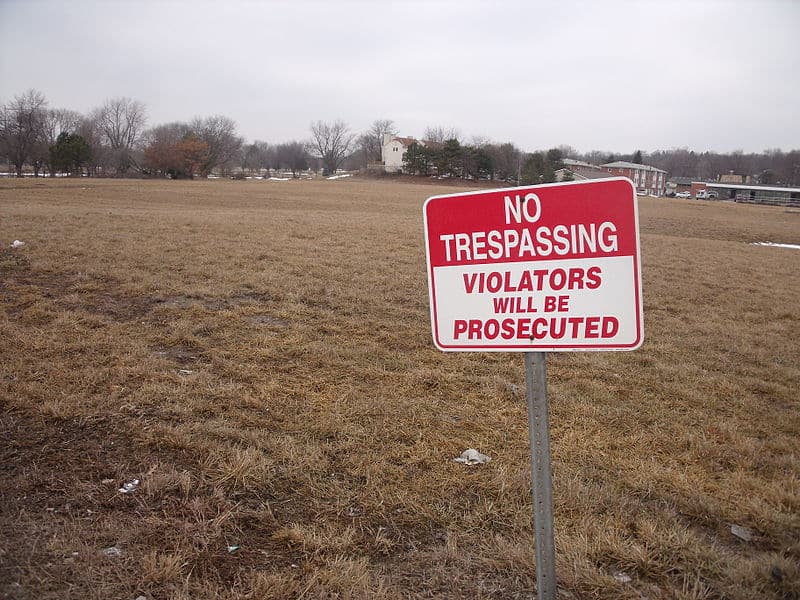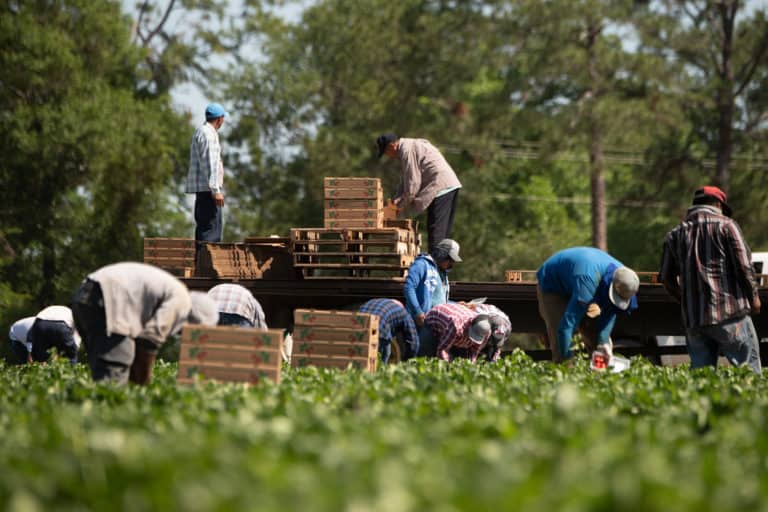Ross Slaughter is a student at Harvard Law School and a member of the Labor and Employment Lab.
In State v. Shack, New Jersey’s Supreme Court declared it “unthinkable” that property rights entitled agricultural employers to “isolate the migrant worker in any respect significant for the worker’s well-being.” Last month, in Cedar Point Nursery v. Hassid, two agribusinesses asked the U.S. Supreme Court to do the unthinkable. They claim that a California regulation that authorizes union organizers to speak with farmworkers on employer property violates the Fifth Amendment’s Takings Clause. Normally, when a plaintiff argues that a regulation has taken her property, courts balance the owner’s property rights against the government’s “power to ‘adjus[t] rights for the public good.’” But the growers have no interest in striking a balance. They want the Court to transform the right to exclude — a single stick in the bundle of property rights — into a freestanding constitutional right.
The growers propose a broad new rule: any time the government authorizes a third party to enter private property, the owner must be compensated. They advance two overlapping arguments: first, that California’s access rule takes “a discrete property interest” — what they call an easement — and second, that the rule impermissibly interferes with the “fundamental right to exclude.” Either claim, if accepted by the Court, would throw its takings jurisprudence into disarray.
The growers’ attempt to restyle the access regulation as an “easement” is a familiar attempt to manipulate the Court’s takings jurisprudence by redefining the property interest at stake. Because courts are more likely to find a taking when the challenged regulation renders property worthless, property owners have an incentive to define the affected “property” as narrowly as possible. But the Court has seen through this ploy, ignoring “legalistic distinctions within a bundle of property rights” and resisting “conceptual severance.” In one case, the Court rejected an analogy between a temporary construction moratorium and a “forced leasehold.” In another, it refused to limit its analysis to the specific tons of coal that the challenged regulation required a mining company to leave underground. The focus, it explained, should be on “the parcel as a whole.”
The “discrete property interest” the growers claim results from just this sort of conceptual severance. To begin with, the access regulation is notan “easement” under California law — the growers abandoned that pretense in their reply brief. It is only like an easement in the sense that both the access regulation and an easement limit an owner’s right to exclude. But that is no different from saying that a building moratorium is like a leasehold. Permitting property owners to pick and choose analogies from the “doctrinal thicket” of non-possessory interests is an invitation for disaster. Restrictive covenants and zoning ordinances can accomplish similar goals, but that does not make the latter “discrete property interests,” much less takings. The growers’ argument is a transparent attempt to make the regulation appear more onerous than it is by defining their property interest more narrowly than state law (or common sense) allows.
The growers’ second argument, that any regulation that interferes with the property owner’s right to exclude is a per se taking, is even more radical. While the Court has emphasized the importance of the right to exclude, it has never held that interference with the right to exclude alone is sufficient to constitute a taking. As Andrew Strom explained, the Court necessarily rejected this argument one hundred years ago when it upheld a D.C. law that required landlords to give notice before evicting their tenants — and again when it rebuffed a racist motel owner’s challenge to the Civil Rights Act of 1964. Instead, the right to exclude is just one factor to consider in assessing the burdens of a challenged regulation. In Pruneyard Shopping Center v. Robins, the Court upheld California’s constitutional protections for pamphleteers on mall property against a takings challenge, explaining that the mall “failed to demonstrate that the ‘right to exclude others’” was “essential to the use or economic value of their property.”
At a more basic level, the right to exclude has never been absolute. In an attempt to downplay the implications of their rule for routine health and safety inspections, the growers concede as much, arguing that the common law authorized government searches of private property, but not access for “third-party union organizers.” History doesn’t support this distinction. English and early American law conferred a whole host of access rights on the public. Indeed, “eighteenth-century American law appears to have authorized trespass actions only for activities believed particularly harmful to the interests of the landowner or the public.”
The contested boundaries of the right to exclude are as much about power over people and their labor as they are about control over land. It wasn’t until after the Civil War that southern states criminalized trespass on unfenced land as part of a larger effort to force emancipated Blacks back onto plantations. And as Marina pointed out, the union access rule is itself the result of a long struggle in which property rights were used as a tool of racial and economic oppression. While California granted unions access to farmland through regulation, New Jersey reached a similar result by recognizing inherent limits on the right to exclude. An absolute constitutional right to exclude would set an ahistorical floor on state property law, undoing worker victories like State v. Shack while entrenching the white supremacist policies of the post-bellum South.
The growers’ arguments may prove too extreme even for the Court’s conservative majority. That might be why Justice Kavanaugh offered the growers an alternative path to victory. In NLRB v. Babcock & Wilcox Co.and Lechmere, Inc. v. NLRB, the Supreme Court held that the NLRA entitles nonemployee organizers to enter employer property only when they have no other reasonable means of reaching employees. Despite the fact that neither opinion mentioned the Fifth Amendment, Justice Kavanaugh suggested that these decisions restricting employees’ statutory rights also set the constitutional limit on organizer access.
This argument is deeply troubling. First, farmworkers are exactly the type of employee that Babcock and Lechmere, restrictive as they are, should allow organizers to enter employer property to reach. Farmworkers are often “isolated from the ordinary flow of information that characterizes our society” by geography, living conditions, language, and culture. Indeed, that is why California has a union access rule. If farmworkers were not excluded from federal labor law, farms would fit neatly among the “classic examples” of remote workplaces that organizers have a right to access.
Second, recasting Babcock and Lechmere as takings cases simply accomplishes surreptitiously what the growers seek to do overtly: enshrine the right to exclude in the constitution. Neither case considered the factors relevant to the regulatory takings analysis, including “the economic impact of the regulation.” It seems implausible that the distribution of union literature in company-owned parking lots — the behavior at issue in both cases — had any meaningful effect on the value of the employer’s property. Rather, as Cynthia Estlund explained, “Lechmere endorse[d] a right to exclude . . . broader than the right property owners currently enjoy in many states.” Whatever its merits as an implied limitation on employees’ Section 7 rights, this generalized right to exclude has no place in the Constitution.










Daily News & Commentary
Start your day with our roundup of the latest labor developments. See all
July 11
Regional director orders election without Board quorum; 9th Circuit pauses injunction on Executive Order; Driverless car legislation in Massachusetts
July 10
Wisconsin Supreme Court holds UW Health nurses are not covered by Wisconsin’s Labor Peace Act; a district judge denies the request to stay an injunction pending appeal; the NFLPA appeals an arbitration decision.
July 9
the Supreme Court allows Trump to proceed with mass firings; Secretary of Agriculture suggests Medicaid recipients replace deported migrant farmworkers; DHS ends TPS for Nicaragua and Honduras
July 8
In today’s news and commentary, Apple wins at the Fifth Circuit against the NLRB, Florida enacts a noncompete-friendly law, and complications with the No Tax on Tips in the Big Beautiful Bill. Apple won an appeal overturning a National Labor Relations Board (NLRB) decision that the company violated labor law by coercively questioning an employee […]
July 7
LA economy deals with fallout from ICE raids; a new appeal challenges the NCAA antitrust settlement; and the EPA places dissenting employees on leave.
July 6
Municipal workers in Philadelphia continue to strike; Zohran Mamdani collects union endorsements; UFCW grocery workers in California and Colorado reach tentative agreements.